 |
|
|
JamCam - Inexpensive Digital Camera |
|
| FTLComm - Tisdale - Wednesday, October 10, 2001 | |
| Curiousity and perhaps the need to know led me to order a digital camera that, depending
on volume, will sell for well under $100. The camera is USB download to either PC
or Mac and produces 640x480 images at 72 dpi (dots per inch). Now from the outset
that makes its technology about the same level as what hit the market in the first
generation digital cameras about five years ago. Our first digital was a second generation
camera Epson PhotoPC 500 which we still use but it has twice that resolution,
as its pictures are 640x480 at 144 dpi. However, for the money I thought I should see what such a camera can do. To save you time in reading this article it is fair to generalise and describe its performance as just slightly better than a conventional video camera. |
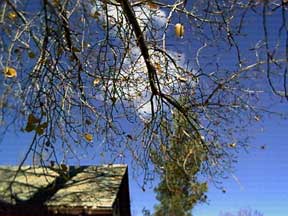 |
| All of the pictures on this page except the one at the top of the page were created
using the little JamCam. There are several things about the camera that need to mentioned and that is that I wish the other camera makers would construct a camera as solidly as this one with great rubber hand grips. It is light and feels good in your hands. It loads up with a nine volt battery which set me back $4.49 but I expect it to deliver a lot of pictures. The camera has limited memory able to take only eight pictures. Set at its lower 320 resolution it can capture twenty-eight images. I have ordered a MMC memory card for it which will give me a reasonable number of exposures. (Memory card retails around $50) |
|
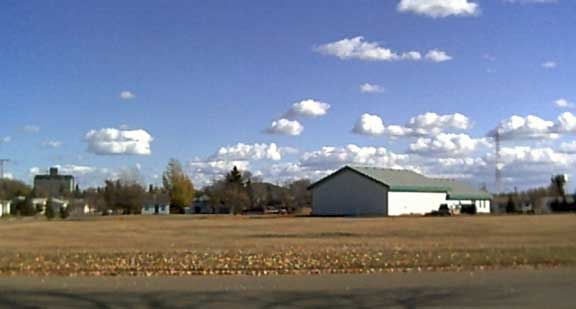 |
|
| In this picture you can see that a full size (eight inch) picture has reasonable colour but is less than crisp. However, displaying the images at the four inch size below and the images look excellent. | |
 |
 |
 This is a six inch sized picture and you can tell by comparing it to other images on Ensign that this is barely adequaate. The JamCam comes with a CD that gives you Adobe PhotoDeluxe and that alone is an excellent purchase as this software can handle images and requires little work on the users part to master the software. To download the images into your computer, JamCam's own software is remarkably powerful, able to do red eye correction, colour correction and cropping. The downloading process is absolutely a snap and all the |
|
| images are automatically stored on your hard drive using the USB cable that comes
with the camera. The camera's operation is straightforward but the menu is a bit quirky and takes some getting used to so that you can enable the flash, clear the pictures in memory, set the resolution and cue the automatic timer. The camera does not like low light levels so that inside you pretty well have to let it flash rather then relying on natural light. It is not quick as it stores each picture and in the exposure below left, it did not like shooting into the bright light. |
|
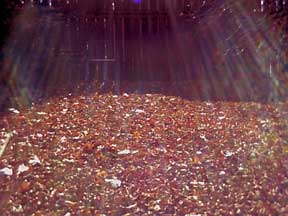 |
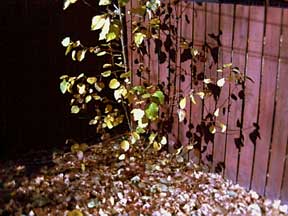 |
| So let's get to the bottom line. The camera is available from FTLComm
for $75. The question is, is this a toy or a real camera? If you keep the print or
web pictures small as seen on this page this is a way to get into digital photography
for really very little money. The camera is durable and the software is outstanding
so even if the camera ends up at your future garage sale, Adobe PhotoDeluxe
will be in your computer and is worth the camera's price alone. But if you want to
get into serious digital photography this is not the camera for you. The HP
Photosmart 315 camera is the best buy on the market with more than two megapixel
images for just under $300. But a camera to try out, one for the kids, or a camera to use in the classroom, this simple JamCam may just be what you need. Schools have been having a tough time with retaining good quality cameras as they tend to disappear, with a JamCam that problem is not as serious as losing a $600 Kodak or Sony. |
|
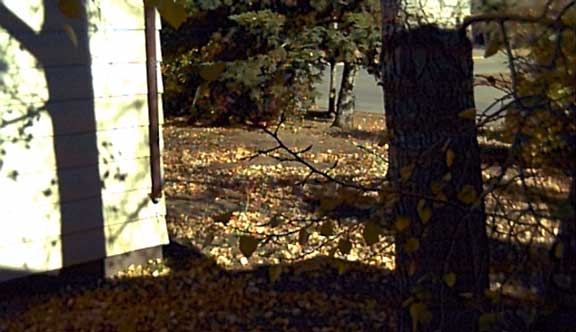 |
|
| Now anyone who knows me realises I have to go to the limit so I thought a good test of this little camera would be to use it to create a QuickTime VR panorama. I broke my own rules here and created the panorama based on an eight inch size using the camera's low resolution image. The resulting panorama is small in terms of memory, but lacks the quality I would like to have. In a virtual reality picture the images are not corrected and you can see the varations as it moves into and away from the sun. However, this test had to be done, when I get the memory card I will do another panorama at the camera's 640x480 resolution and I think it would be better. | |